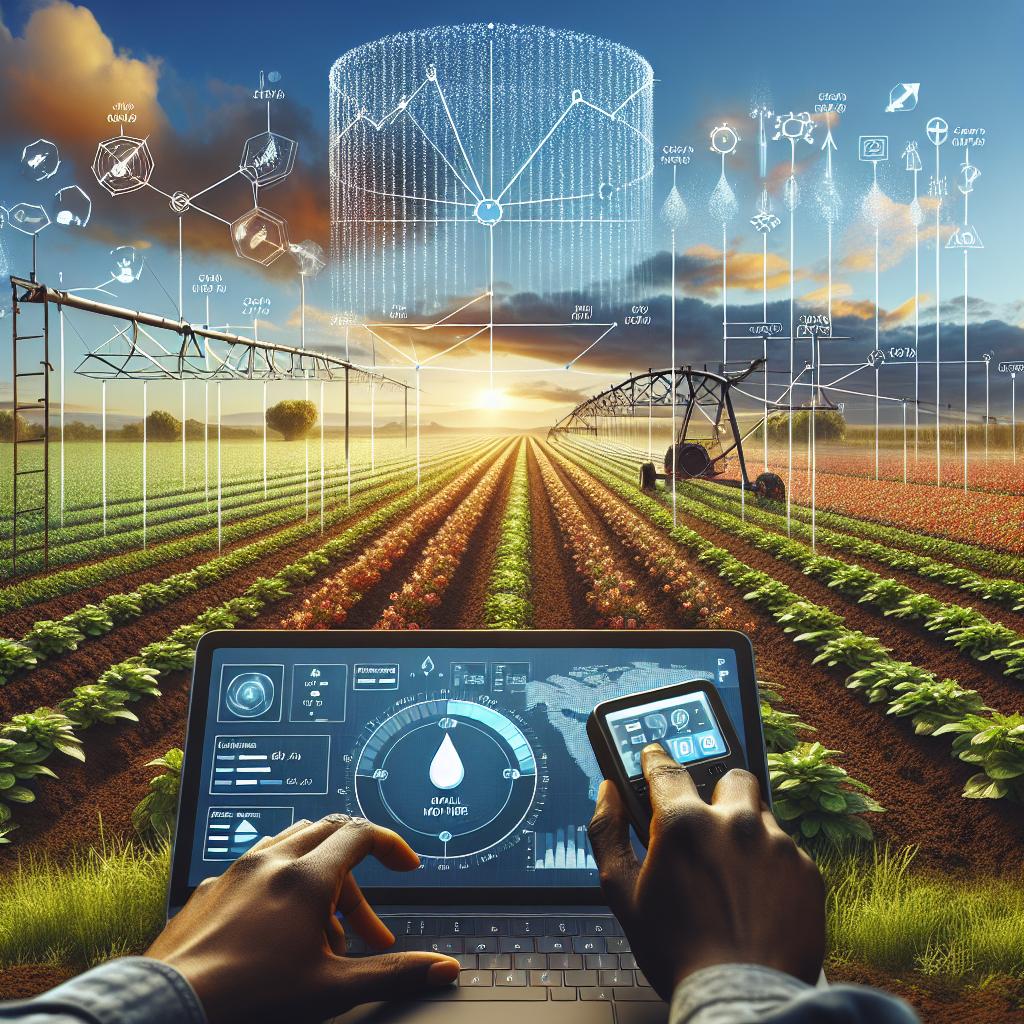This post may contain affiliate links which means I may receive a commission for purchases made through links. Learn more on my Private Policy page.
Introduction:
Imagine this: your garden is a vibrant tapestry of greens, where every leaf dances wiht health, and every bloom bursts with color. But beneath this picturesque surface lies a crucial element that often goes unnoticed—the soil! Just like we need the right amount of water to thrive, our plants depend on the delicate balance of moisture in the earth to flourish. As any seasoned gardener will tell you, effective irrigation isn’t just about turning on the hose—it’s about knowing when, how much, and what to deliver to your green companions. In this amiable guide, we’ll explore the best ways to monitor soil moisture, empowering you to become the ultimate plant caretaker. Together, we’ll uncover innovative tools and techniques that take the guesswork out of watering, ensuring that your garden remains a thriving oasis, while conserving water and nurturing the environment. so grab your gardening gloves, and let’s dig into the world of soil moisture monitoring!
Understanding Soil Moisture Needs for Thriving Gardens
To create a flourishing garden, understanding soil moisture needs is fundamental. Adequate moisture levels promote healthy root progress and nutrient uptake, contributing to overall plant vitality. Here are some effective strategies to monitor soil moisture:
- Soil Moisture Sensors: These electronic devices can provide precise readings of moisture levels, allowing you to water only when necessary.
- Finger Test: Simply stick your finger into the soil up to the second knuckle. If it feels dry, it’s time to water.
- soil Thermometer: While primarily for temperature, it can also give insights into soil condition. Warmer soils dry out faster.
For a more thorough approach, consider using moisture gauges that display a numeric reading.This method combines accuracy and ease, especially beneficial for those managing multiple plant types with varying requirements. Here’s a brief comparison of popular soil moisture tracking options:
| Moisture Monitoring Method | Accuracy | Ease of Use |
|---|---|---|
| Soil Moisture Sensors | High | Moderate |
| Finger Test | Moderate | Easy |
| Soil Thermometer | Low | Easy |

Exploring Innovative Technologies for Accurate Moisture Monitoring
Innovative technologies are revolutionizing the way we monitor soil moisture, ensuring that plants receive the optimal amount of water they need to thrive. Smart sensors are at the forefront of this evolution, providing real-time data that helps farmers and gardeners make informed decisions about irrigation. These sensors can be installed directly into the soil, measuring moisture levels at different depths and sending alerts to your smartphone when irrigation is necessary. Other advancements, like drone technology and satellite imaging, enable comprehensive moisture mapping across large fields, allowing for precision agriculture that saves both water and resources.
Additionally, integrating moisture monitoring with weather forecasting can enhance irrigation strategies significantly. by using machine learning algorithms, systems can predict moisture needs based on local weather patterns, thereby reducing waste and maximizing efficiency. Consider implementing the following technologies for efficient moisture monitoring:
- Capacitive Soil Moisture Sensors: Measure changes in soil moisture levels.
- Tensiometers: Gauge tension in the soil, providing insight into moisture availability.
- Cloud-Based Monitoring Platforms: Centralize data for easy access and analysis.
Moreover, the combination of these tools can be easily managed through user-friendly apps, offering an intuitive interface for adjustments and monitoring.Below is a simple comparison of these technologies:
| Technology | Benefits | Considerations |
|---|---|---|
| Capacitive Sensors | Cost-effective, easy installation | limited depth measurement |
| Tensiometers | Accurate soil moisture readings | Requires maintenance |
| Cloud Platforms | Data accessibility and analysis | dependent on internet connectivity |

Simple DIY Methods to Keep Your Soil in Check
Maintaining optimal soil moisture is crucial for healthy plant growth, and there are several simple DIY methods to keep an eye on your soil’s hydration levels. One effective approach is using a DIY moisture meter. All you need is a wooden dowel or a thin stick. Simply insert it into the soil and leave it for about a minute. When you pull it out, you’ll notice how dry or wet the soil feels on the stick. This will give you a clear indicator of whether your plants need watering! Additionally, you can create a simple feel-test system by using your fingers to check the soil moisture at a depth of a couple of inches. If it feels dry to the touch, it’s time to irrigate.
Another innovative idea is to implement a soil moisture tracking chart to monitor changes over time.You can set up a straightforward table to record your findings each week. By keeping this data, you can identify patterns in moisture levels and adjust your watering schedule according to the plants’ needs. This could be invaluable for gardens that experience varying weather conditions. Here’s a sample layout for your chart:
| Date | Moisture Level (Dry, Moist, Wet) | Action Required |
|---|---|---|
| Week 1 | Moist | No Action |
| Week 2 | Dry | Water Plants |
| Week 3 | Wet | Check Drainage |

Tips for Adjusting Irrigation Based on Soil Moisture Insights
Adjusting irrigation practices based on soil moisture insights is essential for maintaining healthy plants while conserving water resources.By closely monitoring soil moisture levels, you can determine when to irrigate and how much water to apply. Implementing a responsive irrigation schedule helps prevent overwatering and underwatering. Here are some practical tips to help you adjust your irrigation strategy:
- Use Soil Moisture Sensors: Invest in reliable soil moisture sensors that provide real-time data on your soil’s moisture levels. This details enables you to irrigate only when necessary.
- Adjust Irrigation Timers: program your irrigation timers to incorporate moisture readings, allowing for automatic adjustments based on the soil’s needs.
- Deep watering Techniques: Focus on deep watering practices rather than shallow watering, encouraging deeper root growth and making plants more resilient to dry conditions.
- Observe Plant Behavior: Pay attention to the signs from your plants. Wilting leaves or dry soil indicates that it may be time to irrigate, while excessive moisture can signal a need to hold back on water request.
Additionally, creating a simple tracking system for soil moisture can enhance your irrigation efforts. You may find that establishing a schedule based on seasonal trends leads to better outcomes.Try using a table to record the moisture levels and corresponding irrigation actions:
| Day | Soil Moisture Level | Irrigation Action |
|---|---|---|
| Monday | Dry | Irrigate |
| Wednesday | Moderate | Check Again |
| Friday | Wet | No Action Needed |
By combining these insights and actively adjusting your irrigation practices, you can ensure that your plants thrive and use water efficiently, promoting lasting gardening methods.
Wrapping Up
As we wrap up our exploration of the best ways to monitor soil moisture for optimal irrigation, remember that nurturing your garden isn’t just about water; it’s about understanding and respecting nature’s rhythms. Whether you choose the tech-savvy route with moisture sensors or stick with the classic feel-of-the-soil method, staying in touch with your plant’s needs will pay off in vibrant blooms and lush greenery.
Imagine walking through your flourishing garden, knowing that each plant is thriving thanks to your thoughtful soil moisture management. by harnessing the right tools and techniques, you’re not just watering—you’re crafting a thriving ecosystem.So grab your favorite method, put on those gardening gloves, and dive into the rewarding world of mindful irrigation. Happy gardening, and may your plants flourish as vibrantly as your newfound knowledge! 🌱💧
This post may contain affiliate links which means I may receive a commission for purchases made through links. Learn more on my Private Policy page.

